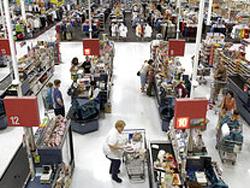Personal Spending and Core Prices Up
Gains in consumer spending, which accounts for more than two- thirds of the economy, are key to sustaining the expansion now that housing and manufacturing show few signs of rebounding. Federal Reserve Chairman Ben S. Bernanke yesterday said policy makers expect a pickup in growth later this year.
Incomes in January jumped 1 percent, boosted bonus payments and gains from stock options exercised at the start of the year, the Commerce Department said.
Economists forecast spending would rise 0.4 percent, according to the median of 74 estimates in a Bloomberg News survey. Estimates ranged from gains of 0.2 percent to 0.6 percent.
Adjusted for inflation, spending rose 0.3 percent, after a 0.4 percent increase the prior month, the report showed.
Because the increase in spending was smaller than the gain in incomes, the savings rate improved to minus 1.2 percent, from minus 1.4 percent the prior month. A negative rate suggests consumers are tapping savings to maintain spending.
Disposable income, or the money left over after taxes, rose 0.8 percent, after 0.5 percent the previous month. Disposable income was up 4.8 percent from January 2006.
Inflation-adjusted spending on durable goods, such as autos, furniture, and other long-lasting items, rose 0.7 percent after increasing 0.8 percent. Purchases of non-durable goods increased 0.1 percent. Spending on services, which account for almost 60 percent of all outlays, rose 0.4 percent.
